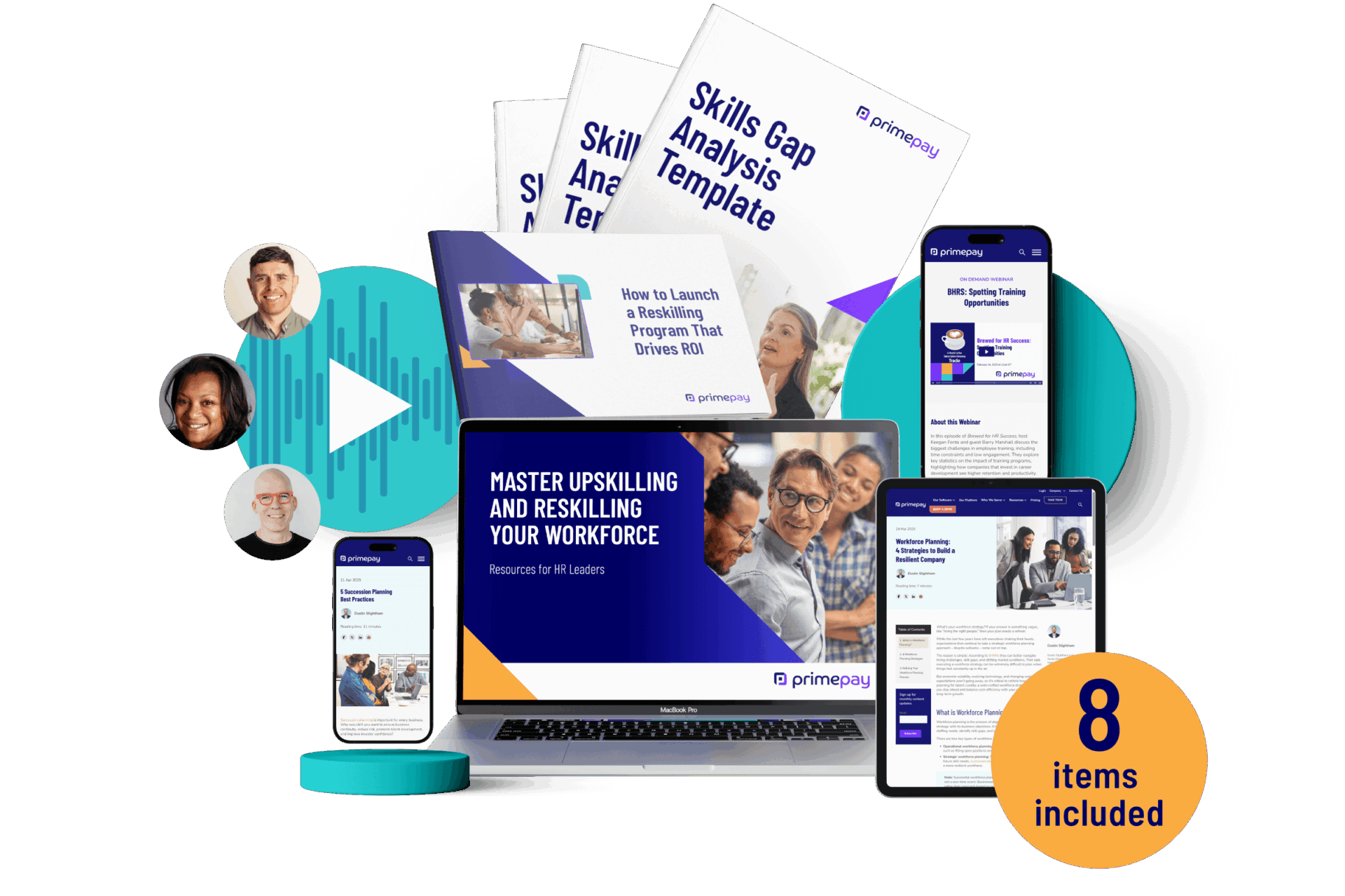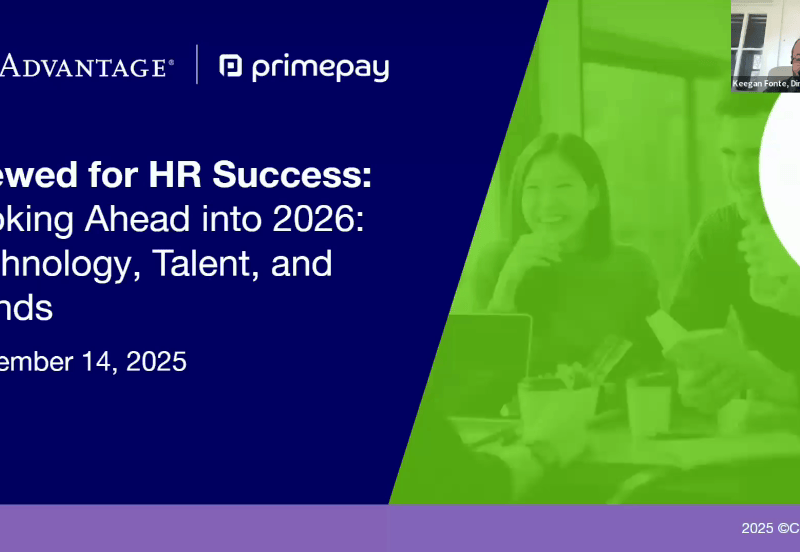The modern workplace has changed dramatically in recent years — and not only because of remote work. Employees are increasingly searching for more meaning and fulfillment in their careers. The shift in priorities has inspired HR managers to take a fresh look at their culture, compensation, and development opportunities and understand how these things influence employee experience (EX).
The Society for Human Resource Management (SHRM) reports that 42% of employees who experience a negative work culture consider leaving, while only 9% of those with a positive experience feel the same.
It stands to reason that companies should prioritize collecting information and designing programs to improve EX, right? Well, our 2024: The Role of Data and Tech in the Employee Experience report shows that only 20% of businesses collect employee experience data on a frequent basis.
This number is not high enough. Every company must prioritize EX to ensure a strong foundation of teamwork and company commitment in a competitive marketplace.
What is Employee Experience?
Employee experience includes all interactions employees have with your business, from recruitment and onboarding to their eventual departure. This process includes the job application, performance assessments, exit interviews, and any other interactions (in-person or online) they have with others at your company.
Why is EX So Important?
You’re buried in EX every day. No one knows better than you that a poor or excellent EX directly influences:
- Corporate culture
- Employees’ perception of leadership and their decisions
- Employee retention and growth
- Company revenue, efficiency, and innovation
The degree to which your organization improves EX will determine the investment you must make in hiring and rehiring employees rather than retaining, growing, and upskilling them.
Improving the employee lifecycle can have a ripple effect on talent acquisition as well. We all know top talent today is in high demand — the companies that land these high-performing individuals are the ones that are laser-focused on building a positive and inclusive EX.
Consider the following data:
- SHRM found that employees with a positive EX are 68% less likely to think about leaving the company. Considering that voluntary staff turnover costs the private sector a trillion dollars each year, improving retention can make a massive difference for your bottom line.
- EX is even more important when we look at people’s attitudes towards their current jobs. Fifty-one percent of employees in the U.S. say they’re looking for a new job, yet studies show that 42% of turnover is avoidable with just a little more proactive effort from leadership.
- A positive EX can also reduce the cost per hire. Currently, U.S. businesses spend $4,700 for every new employee they bring into the business. EX can reduce some of these costs by helping you build a strong employer brand that attracts referrals and word-of-mouth.
All of these factors make employee experience important and relevant for any modern-day organization. And just as you can carefully design and curate the customer experience (CX), you can also create a purpose-built employee experience framework that serves as a guidepost for all employee interactions with each other and the business.
Employee Experience Challenges
Before we dive into strategies on how to improve EX, let’s first acknowledge that getting EX right is hard work and fraught with obstacles. Below are some of the most common struggles you may face and some options to address them.
Compensation Expectations
Compensation packages are a common contention point between employees and their leadership team, especially when there’s a discrepancy between what the employee desires and what you as an employer can offer. This misalignment can, of course, reduce their job satisfaction.
One way to circumvent this challenge is to simply be transparent about pay from the outset. Salary range transparency laws accomplish this while aiming to close the gender pay gap. But other transparency methods, like providing aggregate salary information or offering a percentage range of possible salaries, can increase employee performance just as much without necessarily revealing individual salary figures.
Employee Burnout
Another real threat to EX is burnout. Seventy-seven percent of employees say they’ve experienced burnout in their current job, and 91% say that it impacts the quality of their work.
Corporate culture plays a big role in inspiring positive behaviors that keep burnout at bay. For example, the above study says leadership’s lack of recognition and support is one of the top reasons burnout can run rampant and unchecked. Also, adjusting company attitudes towards time off and encouraging your teams to “switch off” after work (and avoid those 8pm Slack requests) reduces exhaustion and disengagement.
Disconnected Employees
Almost a third (27%) of private sector employees in the U.S. work remotely either some or all of the time. While remote work gives employees flexibility and agency over their workday, it can also create a disconnect between themselves and the company.
Companies that have embraced remote or hybrid work models should look at designing inclusive communication channels and processes that allow all employees to contribute, ask questions, and feel like they’re part of the team.
Conflicting Values
Employee attitudes are changing, and a good salary no longer cuts it when it comes to employee loyalty. In fact, 59% of professionals in Europe say they wouldn’t work for a company that doesn’t share their values.
Your corporate values matter, as does how your leadership team acts on them in the workplace. Be transparent about your values at work. Encourage ethics-based conversations with your employees and invite them to provide feedback and ideas to improve your processes and social and environmental responsibility.
Evaluating Your Business’ Employee Experience
No improvements can be made to your existing EX until you understand how effective it already is — and where you are missing the boat. Since employee experience touches on every aspect of a person’s professional life, your evaluation should consider both the tangible aspects of EX (like opportunities for growth and career development), as well as intangible aspects (like the emotional impact of your leadership style and corporate culture).
Here are some useful ways to understand how your employees feel at work and what you can do to improve that.
Measure Your Employee Net Promoter Score (eNPS)
Employee Net Promoter Score (eNPS) surveys are great for understanding the current state of your employee experience and any upward or downward trends throughout the year. The survey consists of only two questions that can easily gauge how loyal employees feel toward your organization at any given time:
- On a scale of 0 to 10, how likely are you to recommend our company as a place to work to a friend or colleague?
- What’s the main reason for your score?
Shockingly, only 17% of HR leaders report an excellent eNPS score — something to keep in mind as you poll your own employees. No matter the result, tracking your NPS score regularly can give you a clear direction on what changes you need to make to improve it. And who knows, you may be pleasantly surprised.
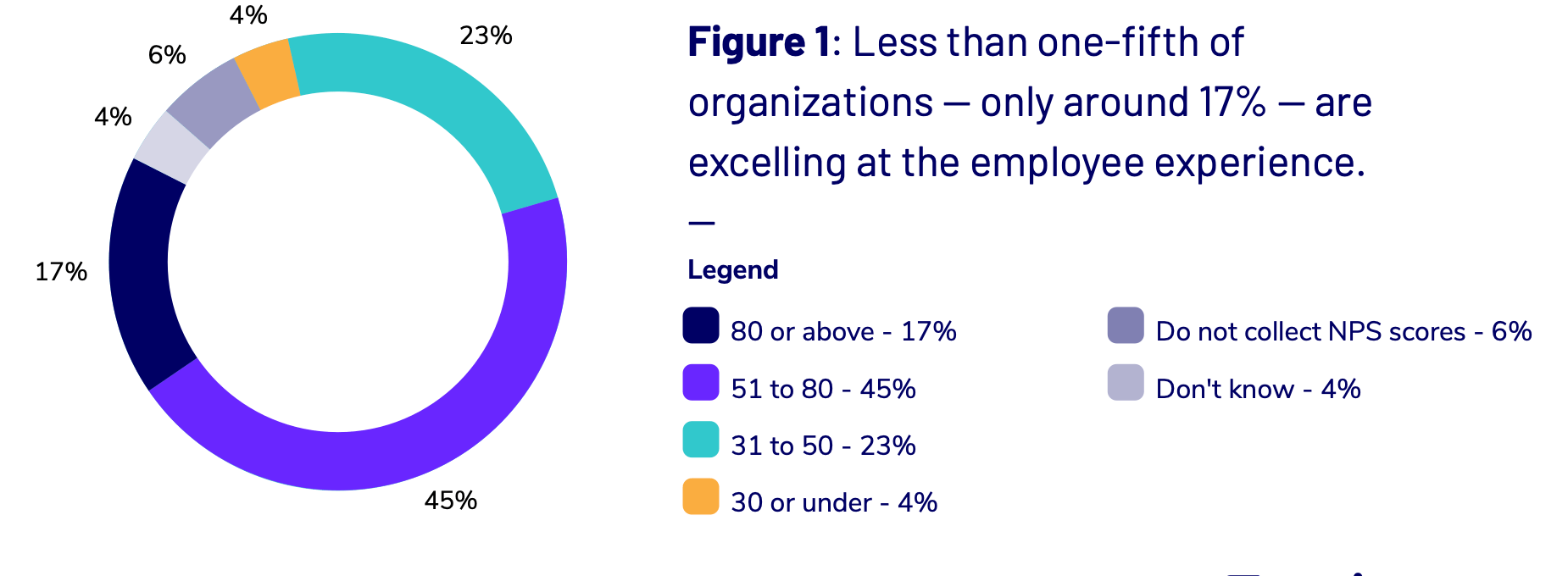
Employee Satisfaction Index (ESI)
Unlike eNPS, which is geared more towards employee loyalty, Employee Satisfaction Index (ESI) surveys look at employees’ immediate satisfaction with specific aspects of their jobs. ESI surveys are usually more in-depth and include areas such as work-life balance, career development opportunities, leadership and management, and overall experience with team collaboration and communication.
The questions you ask will depend on your organization’s needs, but here are some common ones you can use as a starting point. Where possible, try to steer towards open-ended questions to get more detailed and nuanced answers:
- How satisfied are you with your current job role?
- How effectively does your workspace support your productivity?
- Do you feel you have sufficient opportunities for professional growth?
- Do you feel a sense of belonging in your team?
- What changes would you like to see in the workplace?
If you haven’t done this kind of survey before and are looking to build your employee experience strategy, it may be useful to initially measure your ESI every quarter. Once you have a good pulse on how your employees feel, you can move them to an annual cadence.
Stay Interviews
One-to-one interviews with employees who’ve been with the business for a while — known as Stay Interviews — can be excellent for uncovering ways to improve employee experience in your organization. They’ve especially grown in popularity in recent years – even with charity organizations. In a survey done by NonprofitHR 46% of nonprofit organizations responded they conduct stay interviews (as opposed to 33% in 2022).
“Stay interviews will not lead to perfect outcomes, but they will certainly improve engagement and retention in your company. And they will do this by helping your leaders build more productive one-on-one relationships with their employees,” says Richard P. Finnegan, author of The Power of Stay Interviews for Engagement and Retention.
These interviews look at how your employees feel at work, what they like or don’t like about it, and aspects of your work environment they’d change.
Exit Interviews
Exit interviews with employees who are about to leave the business are just as, if not more, valuable as stay interviews. Since they’re leaving your organization, these employees are usually much more transparent about their EX and can give you valuable feedback on how to improve it.
Only 30% of HR leaders actually use exit interviews as a strategy for collecting employee feedback. However, 54% of those who’ve updated their offboarding strategy in the last year say they’re adding exit interviews to their practice, further confirming their importance for HR teams.
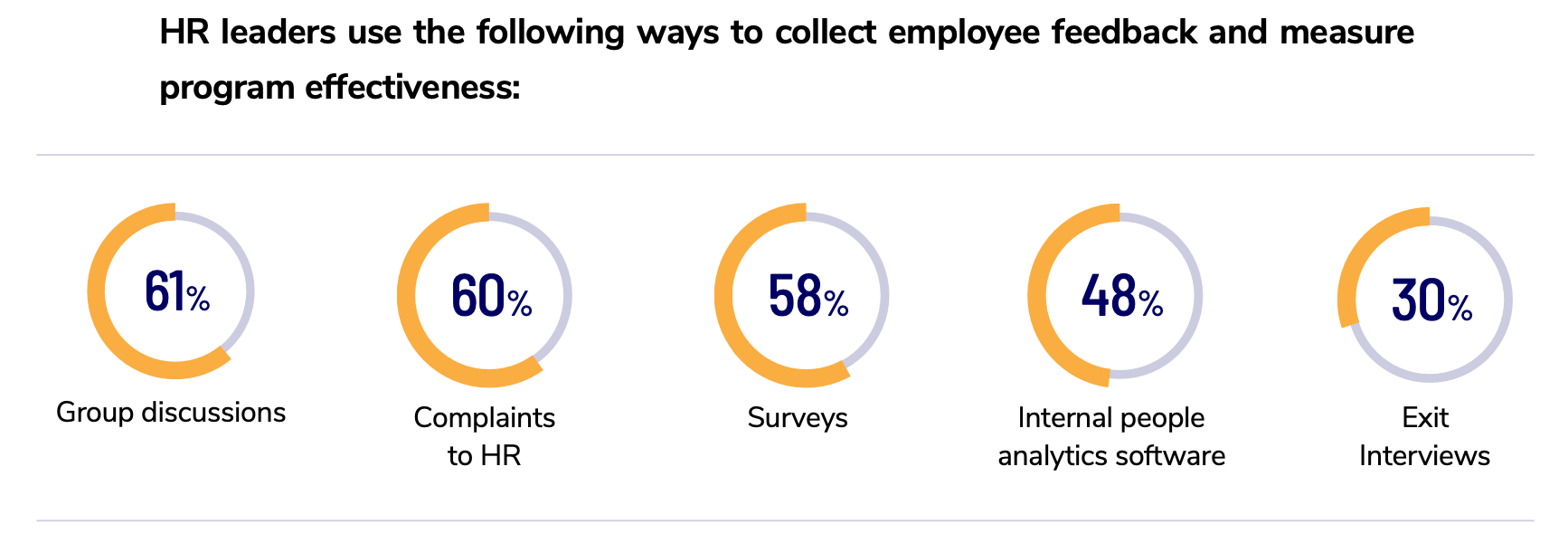
How to Design an Employee Experience
Once you understand the state of the employee experience, you can start working on designing a better one. The first step is to create an employee experience strategy (if you don’t have one already) that examines the overall employee lifecycle and any areas you may be lacking.
Once you know where you stand and where you want to go, you can start putting an action plan in place with specific tasks and timeframes.
Some of these changes might be substantial (like new technologies and workflows), while others can be small but just as impactful (for example, a suggestion box). The details of the adjustments you make will depend on your business, but here are some high-level things you can do to design an ideal EX for your workforce:
Map Out the Entire Employee Journey
Before making any meaningful change, you must understand the processes employees go through from the first interview to the exit interview. Here, it’s a good idea to review the number and the types of interviews candidates have, the length and format of your onboarding process, the team-building elements you put in place for new hires to feel more welcome and comfortable, and the standards you have in place for promoting, increasing salaries, and making the day-to-day an enjoyable experience.
Identify Data Gaps and Inconsistencies
As you analyze your employee journey, try to spot inefficiencies and areas where you may be missing key information. For example, do you find that your recruitment data lives in one system, benefits and compensation in another, and performance reviews in yet another?
Data shows that almost two-thirds (63%) of organizations rely on spreadsheets and disparate systems for tracking and storing HR data. This is a staggering number, considering that data unity and transparency can inform better employee policies and, ultimately, a better employee experience. Investing in a dedicated HR software solution can be a true turning point for your team by consolidating data, providing reports, and giving you the tools you need to identify gaps and opportunities.
Introduce Incremental Changes
Once you’ve addressed the changes you want to make both within your processes and the employee journey itself, it’s time to take action. Create a plan with specific changes you can make immediately as well as in the mid-, and long-term future.
Seventy-four percent of HR leaders believe change positively impacts EX — and these changes don’t have to be massive or expensive to be effective. For example, many organizations that are looking to improve EX focus on their recognition and rewards program (76%), improving internal communications (62%), and their employee resource groups (ERGs) (60%).
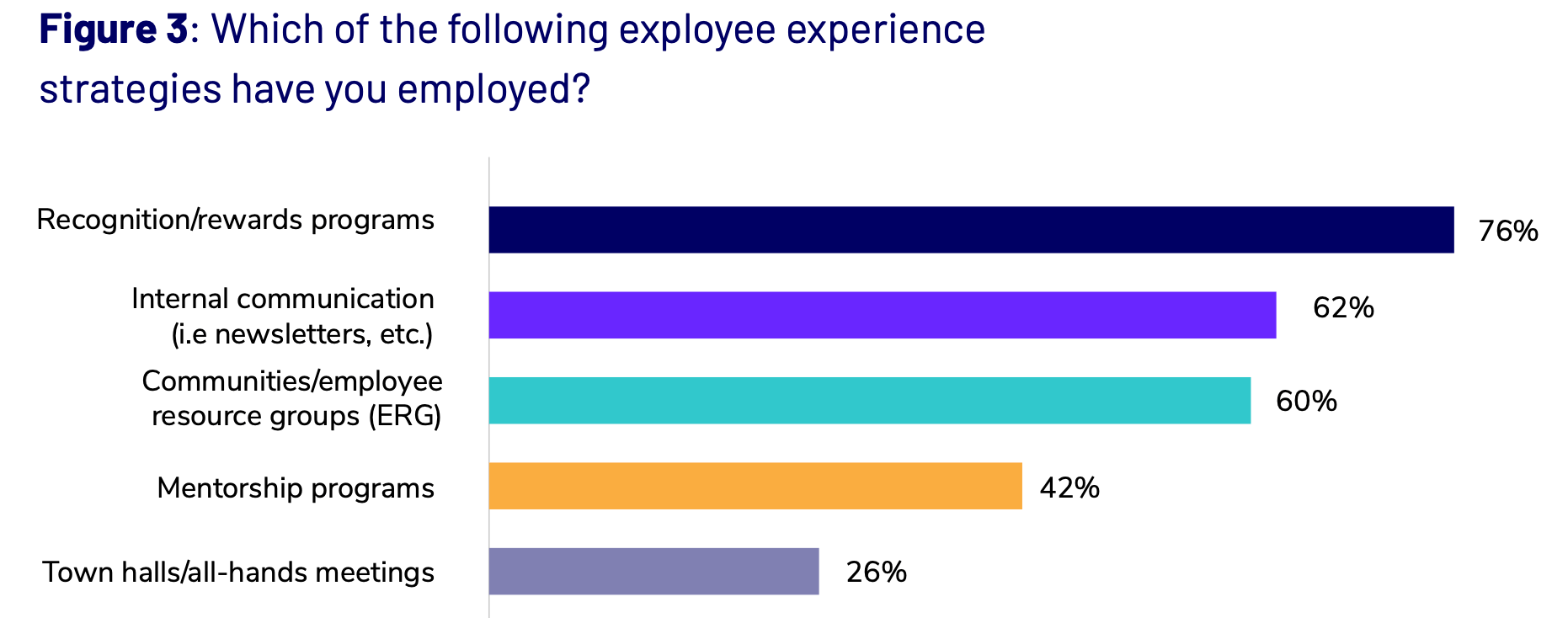
Consider Your Culture and Work Environment
As you work on your employee experience, don’t forget to zoom out and take in the wider organizational context in which these changes will exist.
Company culture plays a massive role in making employees feel a sense of belonging, and it’s something that you, as a leader, can influence directly. Consider the following:
- What behaviors does your leadership team exhibit? Are they in line with your values?
- What’s your corporate communication style?
- What opportunities do employees have to collaborate within and outside of their teams?
- What systems do you have in place to ensure your employees’ well-being?
Your work environment (both physical and digital) can also influence how employees feel at work. Some of the questions to consider here are:
- Is the office environment comfortable and conducive to productive behavior?
- Have all employees had sufficient training on all digital tools and workflows?
- Can some of these processes be simplified or made easier?
Your digital employee experience is especially relevant for hybrid or remote employees for whom the digital workspace is their lifeline to the rest of the organization. Do your employees have the tools, access, and infrastructure they need to proactively contribute and collaborate on a daily basis? Check you have the right processes and requirements in place to ensure all of the bases are covered.
The Evolving Nature of EX
The employee experience is never static. How your employees feel about working for you and what they expect from you as an employer will continuously evolve. That’s why it’s important to keep your finger on the pulse of employee satisfaction and take proactive action to make everyone feel welcomed, supported, and appreciated. This caring attitude is one of the best ways to ensure a productive and thriving workforce.

